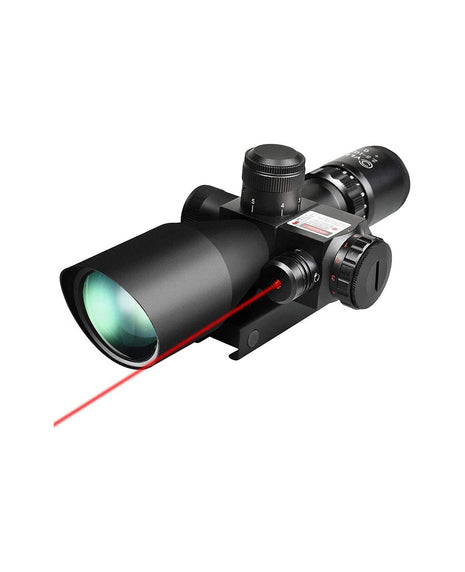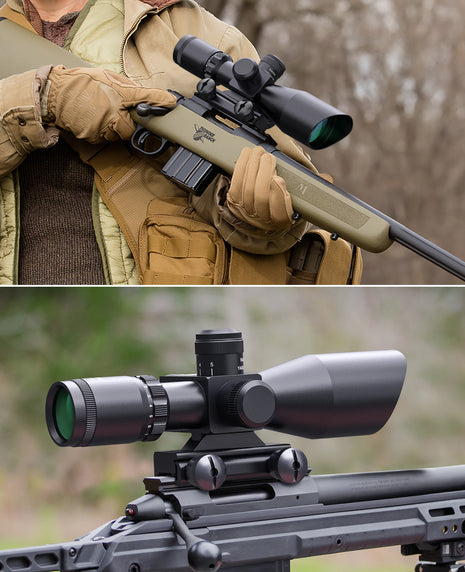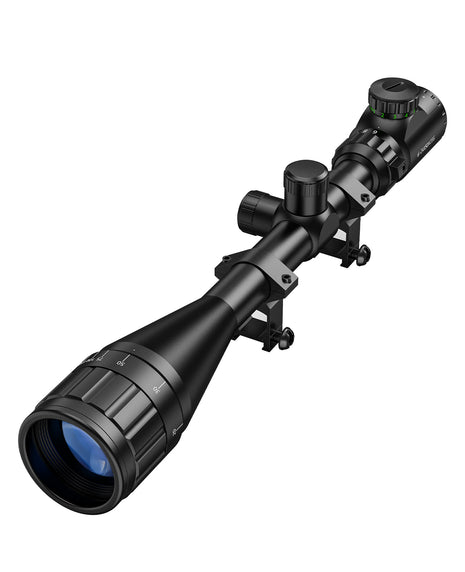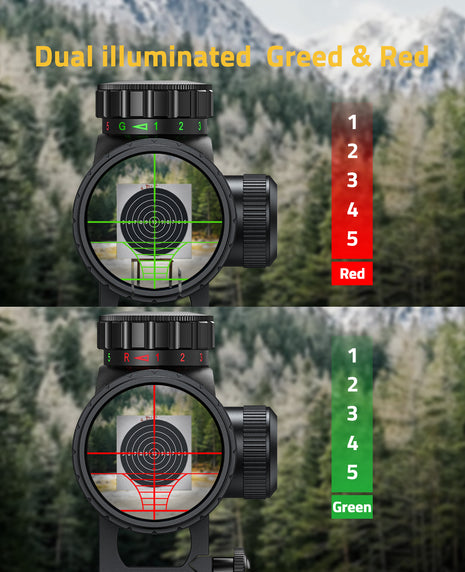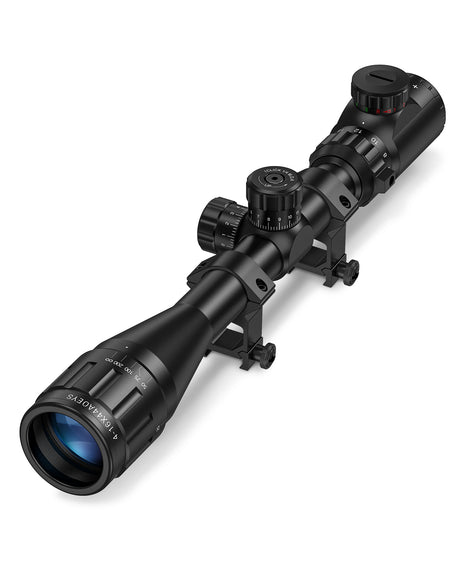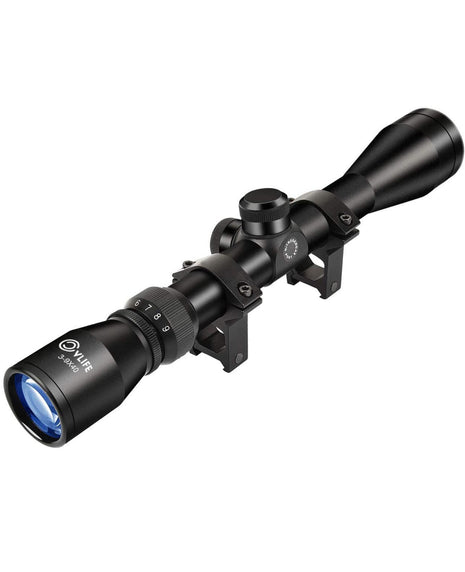Turkey hunting is a time-honored tradition for hunters across the globe. The thrill of the chase, the challenge of outsmarting a wary bird, and the satisfaction of a successful hunt make it one of the most rewarding outdoor activities. But to truly excel in turkey hunting, you need more than just a weapon and camouflage—you need knowledge, patience, and the right tools.
This guide will walk you through every aspect of turkey hunting, from understanding turkey behavior to choosing the best gear and employing effective hunting strategies. Whether you're a first-timer or an experienced hunter, there’s something here for you to enhance your skills and success rates.
1. Essential Gear for Turkey Hunting
Having the right equipment is critical to a successful turkey hunt. Let’s take a detailed look at the must-have gear and how each item can improve your experience in the field.
1.1. Camouflage Clothing
Turkeys have exceptional eyesight—far better than most game animals. To blend in with your surroundings, wear camo patterns that match the terrain where you’ll be hunting. For example:
-
Wooded Areas: Choose patterns with dark greens and browns.
-
Open Fields: Go for lighter greens and beige tones.
Don’t forget gloves, face masks, and hats to cover any exposed skin. Lightweight, breathable fabrics are ideal for warmer weather, while insulated options work best in colder conditions.
1.2. Turkey Calls
Turkey calls mimic the sounds of real turkeys, helping you attract them to your location. Popular types include:
-
Box Calls: Easy to use and perfect for beginners.
-
Slate Calls: Offers versatility and a range of sounds.
-
Diaphragm Calls: Hands-free options for experienced hunters.
Practice with your calls before heading into the field. An effective call can make the difference between an empty bag and a trophy bird.
1.3. Optics and Scopes
Spotting turkeys at a distance and aiming accurately are crucial skills. A reliable optic, like the CVLIFE 4x32 Compact Scope, provides clear vision, precise targeting, and durability in the field. Key benefits include:
- Enhanced visibility in low-light conditions.
- Adjustable focus for pinpoint accuracy.
- Lightweight design for easy portability.
Discover more CVLIFE optics here to elevate your hunting experience.
1.4. Shotguns and Bows
Shotguns are the most popular weapon for turkey hunting, typically paired with turkey-specific loads for maximum effectiveness. For bow hunters, use broadhead arrows designed for small game to ensure a clean kill.
Accessories like the CVLIFE bipods can provide added stability when taking long-distance shots. Check it out here.
2. Understanding Turkey Behavior
To be a successful turkey hunter, you need to think like a turkey. Here’s a breakdown of turkey habits and behaviors to help you anticipate their movements:
2.1. Communication
Turkeys are fascinating creatures with a rich vocal repertoire, and understanding their calls can significantly increase your chances of success in the field. Each call serves a unique purpose, helping turkeys communicate with one another in different situations. Below, we’ll dive deeper into the three main types of turkey calls—clucks, gobbles, and purrs—and how recognizing and mimicking them can help you become a more effective turkey hunter.
2.1.1. Clucks: Clucks are short, soft, single-note calls that turkeys use as a way to communicate their presence and signal contentment or curiosity. A turkey cluck is often described as a "tut" or "put" sound. These calls are not particularly loud, making them ideal for situations when you’re close to a bird and want to reassure it without alarming it.
When and Why Turkeys Cluck
-
Reassurance: Clucks are commonly used by hens or jakes (young males) to let the flock know everything is fine.
-
Curiosity: Turkeys may cluck to investigate a sound or movement they’ve noticed in their environment.
-
Communication: A single cluck often serves as a “contact call,” a way for turkeys to check in with one another.
Hunting Tip for Clucks: Use clucks when a turkey is within range and appears hesitant to approach. A well-timed cluck can help reassure the bird, encouraging it to move closer. Pairing clucks with soft purrs can simulate a feeding turkey, putting the bird at ease.
To successfully imitate turkey vocalizations, it’s essential to practice regularly and listen to real turkey sounds in the wild or through recordings. Each call requires its own technique, and the more realistic you sound, the better your chances of luring in a wary bird. Tools like box calls, slate calls, and diaphragm calls can help you replicate these sounds with accuracy.
For beginners, starting with a box call or slate call is recommended, as they are easier to use. As you gain experience, you can experiment with diaphragm calls for hands-free operation, especially useful when a turkey is close, and you need to keep still.
By learning the nuances of turkey vocalizations, you can communicate effectively with these intelligent birds, increasing your chances of a successful hunt. Whether you’re clucking to reassure a hesitant tom, gobbling to challenge a rival, or purring to simulate a relaxed feeding situation, understanding and mastering turkey calls is a vital skill for every hunter.
2.2. Habitat
Turkeys are highly adaptable birds, but they tend to favor specific environments for different reasons, depending on the time of day, season, and their immediate needs for food, shelter, and safety. As a hunter, understanding these preferences will help you scout your hunting area more effectively. Here are the key features to look for when scouting for turkeys:
2.2.1. Thick cover for roosting: Turkeys typically roost in trees overnight for safety. They seek out dense, secluded areas with thick canopy cover to shield them from predators. Roosting sites are often found in mature forests or areas where there are clusters of trees with low branches or thick foliage. These areas provide a sense of security and offer shelter from harsh weather. When scouting for a hunting location, pay attention to areas with:
-
Old-growth forests or thick hardwood stands: These areas offer tall trees and dense cover, perfect for turkeys to roost.
-
Riparian zones near streams or rivers: Trees near water sources often provide the cover turkeys need for roosting.
-
Hillsides with deep ravines: These natural features tend to attract turkeys, as they provide elevation for safety.
2.2.2. Open Spaces for Feeding: While turkeys roost in thick cover, they prefer open spaces for feeding. During the day, turkeys spend much of their time foraging for food, and they typically feed in open areas like meadows, fields, and agricultural lands. These areas provide the turkeys with access to the plants, seeds, and insects they need for nutrition. When scouting for these areas, look for:
-
Open fields and meadows: These are prime feeding grounds, especially in the early morning or late afternoon.
-
Agricultural land: Cornfields, wheat fields, and even recently plowed soil can attract turkeys looking for seeds, grains, and insects.
-
Pastures and grasslands: These areas are rich in insects, which turkeys will actively search for, especially during the spring and summer.
2.2.3. Nearby Water for Hydration: Turkeys require access to water daily, particularly during hot weather or during the breeding season when their energy needs increase. Water sources not only provide turkeys with hydration but also create an ideal location for them to gather. Turkeys typically prefer clean, shallow water and can often be found near:
-
Streams, creeks, and rivers: These are prime spots, especially if they meander through wooded areas where turkeys feel secure.
-
Ponds and lakes: Turkeys often visit ponds and lakes, particularly in the early morning or late evening to drink and bathe.
-
Wetland areas: These provide a mix of food, water, and cover, making them highly attractive to turkeys.
2.3. Seasonal Changes
Turkey behavior is strongly influenced by the changing seasons, with each phase of the year bringing different patterns in their activity, social behavior, and movement. Understanding these shifts can significantly improve your hunting strategy and help you anticipate where and when turkeys are most likely to be active.
Spring: The Mating Season
Spring is by far the most dynamic time for turkey hunting. As the breeding season approaches, male turkeys, or toms, become highly vocal as they attempt to attract females. This is the prime time for turkey hunters, especially for those who are hunting gobblers. The male turkey’s signature sound, the gobble, can be heard echoing across fields and forests, signaling their readiness to mate. During this time, turkeys are more likely to respond to calls, as they are actively seeking out hens. Toms will often gobble loudly in response to calls, sometimes even over and over, and they may display more aggressive behavior towards potential rivals.
Hunters should take advantage of this vocalization by using a variety of turkey calls, such as yelps, clucks, and purrs, to mimic the sounds of hens and encourage male turkeys to approach. It's important to know when to call and when to remain quiet. Early mornings are ideal for calling, as turkeys tend to be the most vocal and active right after they leave their roosts.
Fall: The Flocking Season
In contrast, fall sees a shift in turkey behavior. As the breeding season ends, turkeys stop the frantic vocalizations of the spring and instead focus on flocking together. The males are no longer as territorial or vocal, as their main concern shifts to survival and finding food. During this time, turkeys tend to form large flocks that include both hens and males, and they often feed together in wooded areas or open fields.
This means that turkeys are harder to locate and less responsive to calls. Instead of hunting for individual toms, hunters will need to focus on finding flocks. In the fall, turkeys are less likely to gobble, so hunters should focus on other signs of turkey presence, like tracks, feathers, or droppings, to identify active feeding or roosting areas. A successful fall hunt often involves more patience and stealth, as hunters need to remain undetected while observing the movements of the flock.
Winter: Survival Mode
During the winter months, turkeys will be concentrated in areas with easy access to food and shelter. Their activity levels are much lower compared to spring or fall, and they may be more scattered. Hunting in winter requires a different approach, as the focus shifts to ensuring that you are located in the right area where turkeys are likely to be feeding or roosting. However, many hunters choose to rest during this period, as winter hunting can be much more challenging.
Adjusting Your Strategy
Understanding these seasonal changes in turkey behavior is critical for developing a successful hunting strategy. In spring, take advantage of the increased vocalization and excitement by focusing on calling and using decoys to attract toms. In the fall, adapt by looking for large flocks and adopting a quieter, more patient hunting style. Keep in mind that turkeys’ habits are also affected by local conditions, including food availability and weather, so always be flexible and ready to adjust your tactics as needed.
3. Techniques for Successful Turkey Hunting
Now that you understand turkey behavior and have the right gear, it’s time to employ effective hunting strategies. Here, we'll explore some key tactics that will give you an edge in your hunt, from preparation and setup to calling techniques.
3.1. Scouting
Scouting is one of the most critical steps in successful turkey hunting. The time you spend preparing before your hunt will directly impact your chances of success. Here’s how you can make your scouting more effective:
-
Plan Ahead: It's essential to scout your hunting area several days before your actual hunt. This gives you time to observe turkey movements, roosting locations, and feeding patterns. Try to visit the area during different times of the day to get a full sense of where the turkeys are most active.
-
Track Signs of Turkey Activity: During your scouting trips, look for turkey tracks, droppings, feathers, and dusting sites (areas where turkeys dust themselves to clean their feathers). These are clear indicators of where turkeys are spending their time. Pay attention to the direction of the tracks and droppings to figure out where the birds are going.
-
Look for Roosting Sites: Turkeys often roost in trees overnight. If you can locate a roosting site, you’ll have a better understanding of where the birds will be in the early morning. They often fly down to feeding areas shortly after daybreak.
-
Ideal Scouting Times: Early morning and late afternoon are the best times to scout. Turkeys are most active during these hours, especially when they’re either leaving their roosts at dawn or returning at dusk. During midday, turkeys tend to be less active, as they seek shade and rest.
-
Use of Binoculars: To get a better view of distant areas, binoculars are invaluable. When scouting, keep your binoculars handy to observe turkeys from a distance without disturbing them. This can help you confirm where they’re feeding or roosting.
3.2. Setting Up Your Blind
Setting up a blind in the right spot can make all the difference when it comes to successful turkey hunting. Here are a few tips on how to set up your blind effectively:
-
Choosing the Right Location: Place your blind in a location that offers good visibility of the area where you expect turkeys to appear. Look for areas with high turkey traffic—near known turkey paths, feeding areas, or close to roosting trees. It’s essential to pick a spot where turkeys are likely to pass by but also where you can conceal yourself adequately.
-
Blend into the Environment: Your blind should blend seamlessly with its surroundings. Use natural cover like bushes, tall grass, or tree lines to help conceal your blind. If there are no natural covers, consider using camo netting or other materials to make your blind less conspicuous. The more it blends into the landscape, the less likely turkeys are to spot it.
-
Stay Downwind: Turkeys have an excellent sense of smell, and they can easily detect human scent. Set up your blind downwind of where you expect the turkeys to approach. This reduces the risk of turkeys picking up your scent and avoiding the area. If you are unsure of the wind direction, use a scent-control product or check wind patterns using a wind checker before setting up.
-
Comfort and Concealment: Make sure you’re comfortable and well-concealed inside the blind. If possible, use a ground blind with enough space for easy movement. Having a good setup allows you to remain still and quiet, which is essential to avoid spooking the birds. Also, ensure you have adequate gear, such as calls, water, and extra layers if needed, so you don’t have to leave the blind unexpectedly.
-
Time Your Setup: Arrive at your hunting spot early enough to set up your blind before dawn. Ideally, you should be in place at least 30 to 45 minutes before first light to avoid disturbing any turkeys that may be roosting nearby.
3.3. Calling Techniques
Calling is one of the most effective ways to lure turkeys into range. However, using calls too frequently or too aggressively can lead to spooking them. Here’s a guide to using calls in the most effective way:
-
Start Soft and Subtle: Begin with soft, subtle calls like clucks and purrs. These calls are similar to the sounds turkeys make when they’re relaxed or feeding. By starting quietly, you avoid alarming nearby turkeys and can gauge their interest. If you hear a gobbler respond, you can increase the intensity of your calls.
-
Use Yelps for Long-Distance Attraction: If the turkeys are far away or aren’t responding to your initial calls, you can try using louder, more persistent calls, such as yelps. A yelp mimics the sound of a hen calling for a mate and is an effective way to attract gobblers. However, be mindful of overdoing it—constant loud calling can make turkeys wary.
-
Gobble Calls for Aggressive Tactics: Gobbling is primarily a call used by male turkeys to attract females and assert dominance. You can use a gobble call to challenge a gobbler or get his attention if he’s hanging back. However, gobbling calls can also intimidate nearby turkeys and lead to them becoming cautious. Use this call sparingly and only when necessary.
-
Match the Calls to the Situation: Different situations call for different sounds. If you're calling a gobbler who’s already responding, use a mix of clucks, purrs, and soft yelps to keep him coming. If a gobbler is hanging back or moving away, you can use a louder, more aggressive call to entice him closer. Pay attention to the turkeys' responses to adjust your calling.
-
Avoid Overcalling: One of the most common mistakes novice hunters make is overcalling. If you call too much or too loudly, it can make turkeys wary or spook them entirely. After making a call, listen closely for any responses. If there’s no immediate response, give it a few minutes before trying again. Turkeys are often cautious and may take time to respond.
-
Turkey Call Placement: Position your call where you expect turkeys to be coming from. If they’re approaching from the left or right, make sure to direct your call toward that side. Don’t call directly in front of you, as this could alert the turkeys to your position.
4. Final Tips and Safety Considerations
Safety should always be the top priority when hunting. The field, while exciting and rewarding, can also be dangerous if proper precautions aren’t taken.
One of the most important safety measures is visibility. Wearing blaze orange or other high-visibility clothing when moving through the woods is critical. While turkeys have excellent eyesight, the visibility of hunters is key to avoiding accidents with other hunters in the area. Blaze orange helps ensure that you’re seen, especially during the early morning or late afternoon when light conditions might be poor.
Every region has specific hunting regulations designed to protect wildlife populations and ensure sustainable hunting practices. By respecting these rules, you’re not only ensuring your own safety but also contributing to the long-term health of the turkey population and the environment.
Aside from following the law, ethical hunting practices should be a guiding principle for every hunter. Ethical hunting means being respectful of wildlife, the environment, and fellow hunters.
Q&A Section
Q: Can I use a rifle for turkey hunting?
A: While some areas allow rifles for turkey hunting, shotguns are generally preferred for their effectiveness at close range.
Q: What is the best time of day to hunt turkeys?
A: Early morning and late afternoon are the most active times for turkeys, making them ideal for hunting.





